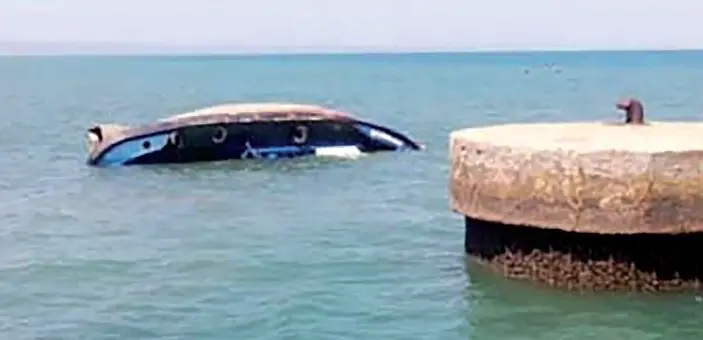Tug overspeeding proves deadly
In its latest Safety Digest, UK MAIB describes how a tug girted and then capsized, while assisting a UK-flagged container ship departing from port. The accident, mostly attributed to inexperience and lack of coordination among the bridge team, pilot and tug crew, resulted in two fatalities.

In its latest Safety Digest, UK MAIB describes how a tug girted and then capsized, while assisting a UK-flagged container ship departing from port. The accident, mostly attributed to inexperience and lack of coordination among the bridge team, pilot and tug crew, resulted in two fatalities.
The incident
It was the 158m long container ship’s first call at the port. The wind was pushing it onto the quay and there was a current running off the berth. The master, in conjunction with the port pilot, decided that a tug would be used to assist the ship to move clear of the berth during the departure operation. The port’s usual ASD tug was away from the port undergoing annual maintenance. A small, single screw tug had been brought into the port to provide temporary cover. The tug was connected to the ship’s port quarter to help pull its stern off the berth. During the manoeuvre, the prevailing wind and tidal conditions caused the ship to move towards an outlying mooring dolphin. To avoid striking it, the ship’s master briefly increased ahead speed to 5kts, during which time the tug girted and capsized. Two of the tug’s five crew died.
Lessons Learned
- The girting and capsize of tugs is an ever present risk if towing operations are not managed and executed safely.
- Girting can rapidly lead to a tug capsizing. It occurs when high athwartships towing forces cause a tug to be pulled sideways through the water by the towline. If the tug is unable to manoeuvre out of this position it is likely to capsize. Single screw tugs with a low freeboard are at particular risk of girting.
- The success of any manoeuvre involving tugs relies on the tug and its crew being capable of meeting changing manoeuvring demands. A common, detailed understanding of the plan, proactive communications between the bridge team, pilot and tug crew, and an agreed means for monitoring the tug throughout the towing operation are necessary.
- The ship’s master’s and pilot’s intention to apply ahead propulsion was not first communicated to the tug’s crew by the pilot, resulting in the ship moving rapidly ahead before the tug could be manoeuvred in an attempt to prevent it from girting.
- The tug’s crew were inexperienced in this type of operation. The tug was not fitted with a gog rope and no emergency means were provided to release the tow rope under tension. As such, there was little that the tug’s crew could do when the tug began to be towed by the ship. The tug also had open doors and hatches, and it is highly probable that their status contributed to the tug’s rapid capsize due to downflooding.
Source: safety4sea















![AIRBUS A380 [MORE THAN 600 PASSENGER’S CAPACITY PLANE]](https://cdn.tinn.ir/thumbnail/4jCp4EQvCU0b/IjHVrSYQrIAqIzXuTzADR7qLYX4idQT4nfq__26E5SCUPLMqfhWkWajvuO9Wfq1ql1TjV4dhkrHliNQU82kMpo2NNftT_NGEwHc9KXtN_rk731bmifa2IQ,,/airbus-a380-structure1.jpg)

Send Comment